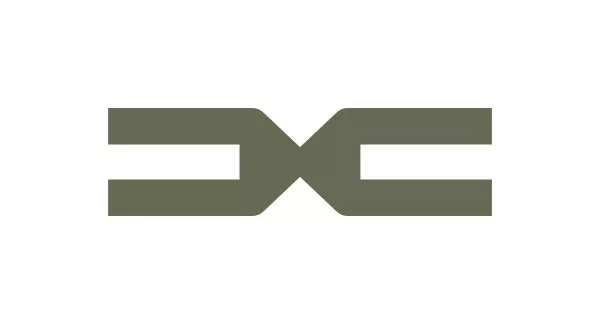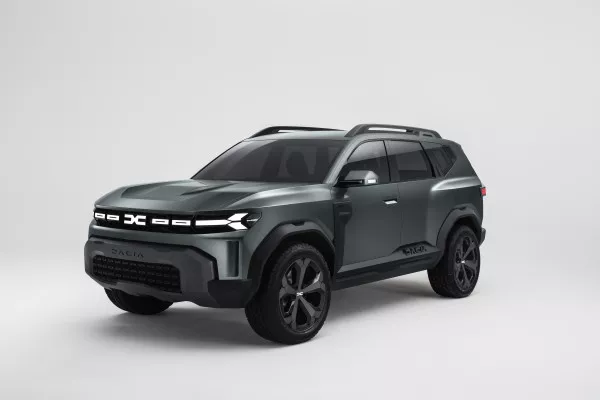Dacia develops its industral plan and goes on the offensive in the C-segment
- Dacia is going on the offensive in the C-segment and developing its industrial plan to support the rollout of its product plan
- The competitive and extremely flexible CMF-B platform has enabled development
- A new vehicle based on the Bigster Concept, set to launch in 2025, will be manufactured at the Mioveni plant in Romania
- The Jogger range will be manufactured at the Tanger plant in Morocco in the second quarter of 2024
Le 20 March 2023
DACIA BOLSTERS ITS STRATEGY IN THE C-SEGMENT
During the presentation of the Renaulution strategic plan on 14 January 2021, Dacia unveiled the Bigster Concept – a concept car that opened new horizons for the brand’s range, particularly in the C-segment. True to the Dacia spirit, the Bigster Concept is a 4.6 m long, rugged and roomy vehicle that offers everything required of an SUV in its segment. It is set to launch in 2025.
Meanwhile, Dacia’s first C-segment model, the Jogger, was unveiled at IAA Mobility in Munich in September 2021, reinventing the concept of an affordable and multi-purpose family vehicle. Available in five and seven-seat versions, the Jogger perfectly embodies the position and spirit of Dacia. The multi‑purpose Jogger – with exceptional spaciousness and modularity, plus an adventurous design – is the most accessible family car on the market. It comes in petrol, LPG and, as of January 2023, hybrid engine options.
The CMF-B, A COMPETITIVE AND FLEXIBLE PLATFORM
The competitive and extremely flexible CMF-B platform is central to Dacia’s industrial strategy.
Industrial sites in Romania and Morocco have capacity to produce:
- different car body styles: sedans, hatchbacks and SUVs in the B and C-segments.
- models kitted out with combustion, alternative and hybrid engines, guaranteeing compliance with changing regulations.
- two and four-wheel drive vehicles between 4.1 m and 4.6 m long.
This platform gives Dacia great agility, helping the brand accelerate its business plan to support the rollout of its product plan and, in particular, launch an offensive in the C-segment.
NEW MODELS ALLOCATED TO THE MIOVENI AND TANGER PLANTS
The Mioveni plant in Romania was inaugurated in 1968 and is the Dacia brand’s historic production facility. It has now become a benchmark industrial complex with a bodywork-assembly unit, a mechanical and chassis unit, a foundry and a logistics platform. Four of the brands’ models are currently produced in Mioveni: the Duster, the Sandero Stepway, the Logan and the Jogger.
From 2024, the new generation of Dusters will be produced in Mioveni using the CMF-B platform.
And from 2025, so will a new Dacia vehicle; a C-segment SUV based on the Bigster Concept.
To share the load between the Dacia plants and help the brand go on the offensive in the C-segment, the Jogger range, including the Jogger HYBRID 140, will also be produced at the plant in Tanger, Morocco from the second quarter of 2024.
After beginning operations in 2012, the industrial facility in Tanger is revolutionising the Moroccan automotive industry, with zero carbon emissions and zero industrial effluent discharges. The Tanger plant also builds cars with the CMF-B platform and mostly produces the Dacia Sandero, the most highly sold car to private customers in Europe since 2017.
 Two years after the presentation of the ‘Renaulution’ strategic plan, Dacia has successfully completed its phase of radical transformation by renewing its entire range, rolling out a new brand identity and reinforcing its electrified models. We are now focusing on going on the offensive in the C-segment and are therefore developing our business plan while remaining true to our values: providing the essentials to our customers and offering the very best value for money.
Two years after the presentation of the ‘Renaulution’ strategic plan, Dacia has successfully completed its phase of radical transformation by renewing its entire range, rolling out a new brand identity and reinforcing its electrified models. We are now focusing on going on the offensive in the C-segment and are therefore developing our business plan while remaining true to our values: providing the essentials to our customers and offering the very best value for money.Denis le Vot, CEO of Dacia
_1678976897.png) All the industrial teams are ready to support Dacia as it goes on the offensive in the C-segment. Their expertise and day-to-day commitment, as well as the flexibility and efficiency of our industrial system, enable us to support the brand and meet our customers’ expectations.
All the industrial teams are ready to support Dacia as it goes on the offensive in the C-segment. Their expertise and day-to-day commitment, as well as the flexibility and efficiency of our industrial system, enable us to support the brand and meet our customers’ expectations.Christophe Dridi, VP Industry of Dacia
Born in 1968 then launched throughout Europe and the Mediterranean region in 2004, Dacia has always offered cars with the best value for money, while constantly redefining that which is essential. A disruptive brand, Dacia designs vehicles that are simple, versatile, reliable, and that suit the lifestyles of its customers. Dacia models have become market benchmarks: Logan, a new car at second-hand prices; Sandero, the best-selling private car in Europe every year since 2017; Duster, the most sold SUV to retail customers in Europe since 2018; Spring, European champion of affordable electric mobility; Jogger, the versatile C-segment family car. Present in 44 countries, Dacia has sold more than 8 million vehicles since 2004.
Born in 1968 then launched throughout Europe and the Mediterranean region in 2004, Dacia has always offered cars with the best value for money, while constantly redefining that which is essential. A disruptive brand, Dacia designs vehicles that are simple, versatile, reliable, and that suit the lifestyles of its customers. Dacia models have become market benchmarks: Logan, a new car at second-hand prices; Sandero, the best-selling private car in Europe every year since 2017; Duster, the most sold SUV to retail customers in Europe since 2018; Spring, European champion of affordable electric mobility; Jogger, the versatile C-segment family car. Present in 44 countries, Dacia has sold more than 8 million vehicles since 2004.
Sur le même sujet





